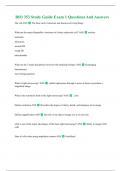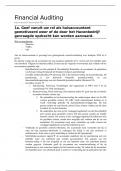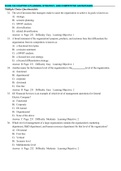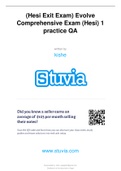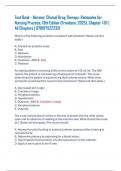Tentamen (uitwerkingen)
BIO 353 Study Guide Exam 1 Questions And Answers 2024/2025 Tests
- Vak
- Instelling
BIO 353 Study Guide Exam 1 Questions And Answers 2024/2025 Tests The cell ANS The basic unit of structure and function in living things What are the major Organelles/ structures of a basic eukaryotic cell? ANS nucleus nucleolus ribosomes smooth ER rough ER mitochondria What are the 3 ...
[Meer zien]
